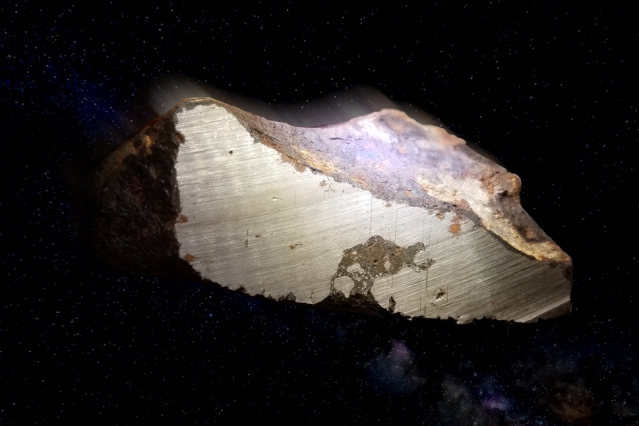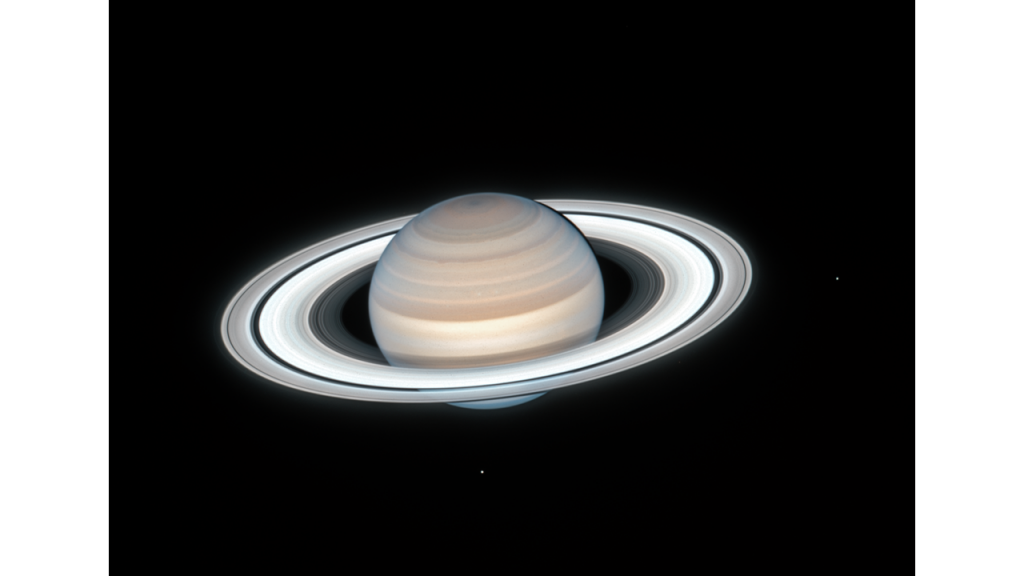Media
Transcript
The weird thing about our solar system is that we don’t know how many large worlds it has or that it formed with. For all we know, there are one or more large worlds, with masses like Earth’s or larger, lurking out in the Kuiper Belt or beyond.
I’m using the word world, very much on purpose. Ganymede may or may not have formed around Jupiter, and with a size greater than Mercury, it’s complex geology makes it something different than the lumpy masses of the undifferentiated comets or asteroids. The same holds for Titan and Triton, and Ceres and Vesta each have reasons to scientifically see them as more akin to Mercury than to Bennu or Eros.

When our solar system formed some 4.5 to 5 billion years ago, it was through the buildup of dust grains into gravel, into bigger and bigger rocky and icy structures until eventually they either collided with something and were destroyed, until they formed a planet (and maybe collided with something and were destroyed), or until they ran out of material to feed on and use to grow.
Today, our solar system continues to have objects that grow as they slowly eat dust and meteors or asteroids and comets. We see fresh impacts on Mars and the Moon, we sometimes pick up the shrapnel of shattered meteorites, and amateur astronomers periodically catch the flash of light and dark splash of material of Jupiter consuming some solar system object. Objects like MU69 or Arrokoth, with its snowman shape of two objects merging, show that even small objects continue to come together.
What we haven’t directly observed yet are the wild collisions that shatter objects and send bits of rock flying across the solar system. All we see are the flying rocks themselves. In the asteroid belt and beyond, we see families of asteroids that all reflect light in similar ways, indicating similar compositions and possibly a single parent body that was destroyed to make that family. Here on Earth, where we can gather meteorites and then study their chemistry in labs, we find those families reflected in specific mineral compositions that tell us, “This rock came from Vesta and that one from Mars.”
It is in the lab that we can start to understand the geology of these disparate, shattered bodies, discovering some of them are made of rocks that must have once been melted in the intense heat of a world’s radioactive hot core, while others seem to have never been melted at all and rather formed only after they had thermally and radioactively cooled and are thus unmelted. This tells us that some now lost worlds were layered like a world, with a core, and a crust, and maybe even more complex geologies, while others are just piles of never melted rocks.
In studying these different families, planetary scientists have been perplexed by one particular family of meteorites that comes in the coolly collected and melted and mixed varieties. Called the IIE meteorites, they all appear to come from the same parent object, but some of the meteorites are made of melted minerals while others are unmelted.
In a new paper in Science with lead author Clara Maurel, researchers detail how this odd mix might be possible, and their research points to a world that was.

Using a myriad of research tools, they have determined the IIE meteorites came from a single parent object that had a liquid metal core surrounded by a solid crust. This core was able to drive a magnetic field that is now found fossilized in the cool metal of some meteorites that appear to be made of the core material.
In order to get material out of the original world’s core and into upper layers where it could cool under the influence of the magnetic field, simulations find that a high-velocity impact could dislodge material from the original object’s core and into outer layers where it cooled. According to Maurel: As the body cools, the meteorites in these pockets will imprint this magnetic field in their minerals. At some point, the magnetic field will decay, but the imprint will remain. Later on, this body is going to undergo a lot of other collisions until the ultimate collisions that will place these meteorites on Earth’s trajectory.
That ultimate collision is likely the one that wrecked this former world. To explain its geology, it must have had a core that was tens of kilometers in diameter, surrounded by even more material that made up its mantle and crust. This world isn’t out there anymore that we can see, and we can add it to the list of lost worlds along with Theia, the world that hit Earth and helped form our moon; whatever it was that hit Jupiter and fluffed up its core; whatever hit Uranus and knocked it over; and whatever hit… well, this list goes on and on.
Our solar system is a destroyer of worlds.
That destruction will likely continue for as long as our solar system exists, and it is in studying the diversity of worlds that still exist that we can start to understand all the possibilities that may once have existed.
Ganymede, Jupiter’s largest moon, is one of the more interesting objects to study. Just to repeat, this moon is bigger than the planet Mercury. It is the only moon known to have its own magnetic field, implying that this ice-covered moon has a metallic core. First imaged by the Voyager missions, and studied further by the Galileo spacecraft, this moon is generally shown as a grey cratered world. These previous missions, however, hadn’t been able to see the poles of Ganymede, and these have been imaged for the first time by the JIRAM instrument aboard the Juno mission.

This infrared camera has revealed that the ice at Ganymede’s north pole doesn’t have a normal crystalline structure because of the effects of this magnetic field. According to Juno co-investigator Alessandro Mura: The JIRAM data shows the ice at and surrounding Ganymede’s north pole has been modified by the precipitation of plasma.
The NASA News item goes on to explain: This is because charged particles follow the moon’s magnetic field lines to the poles, where they impact, wreaking havoc on the ice there, preventing it from having an ordered (or crystalline) structure. In fact, frozen water molecules detected at both poles have no appreciable order to their arrangement, and the amorphous ice has a different infrared signature than the crystalline ice found at Ganymede’s equator.
These are completely new results, coming from Dec 26, 2019 data, and we look forward to reading the journal articles these new images will lead to.
It’s not entirely unusual for missions to release images with a touch of science prior to publication of new results. It’s so common, in fact, that we have two such stories today.

In other news, from another mission, of yet another world, the Hubble Space Telescope has released a July 23 image of Saturn in its full summer glory. Or at least in its Northern Summer glory with its southern hemisphere largely hidden by its rings. This image is part of a yearly series taken by Hubble that allows us to watch this world change during its 29-year orbit. Launched in 1990, and fixed in 1993, Hubble hasn’t yet caught a complete circuit of Saturn around the Sun but is getting very very close.
Here is to hoping that Hubble stays healthy and continues to bring us the changing face of Saturn for seasons to come.
Learn More
An Origin Story for a Family of Oddball Meteorites
- MIT press release
- “Meteorite evidence for partial differentiation and protracted accretion of planetesimals,” C. Maurel et al., 2020 July 24, Science Advances
Juno Takes First Images of Jovian Moon Ganymede’s North Pole
Hubble Sees Summertime on Saturn
Credits
Written by Pamela Gay
Hosted by Pamela Gay
Audio and Video Editing by Ally Pelphrey
Content Editing by Beth Johnson
Intro and Outro music by Kevin MacLeod, https://incompetech.com/music/


 We record most shows live, on Twitch. Follow us today to get alerts when we go live.
We record most shows live, on Twitch. Follow us today to get alerts when we go live.